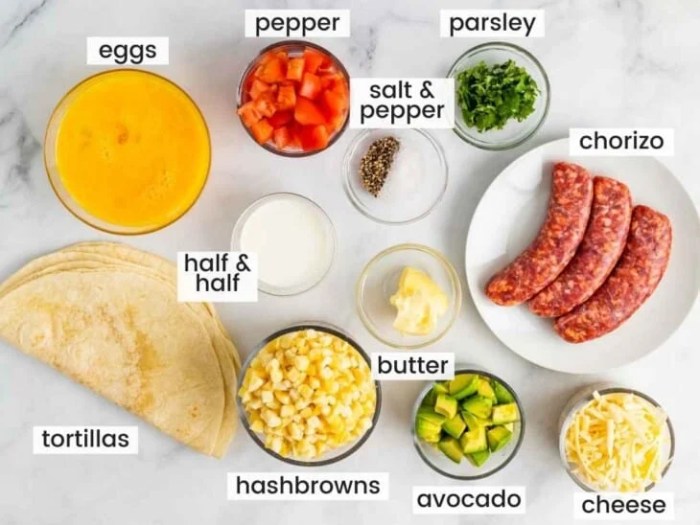Price Point Analysis of $1.99 Jeans
Fashion nova 1.99 jeans – Offering jeans at a price point of $1.99 is a bold and highly unusual strategy in the fashion industry. It immediately raises questions about the feasibility of such a low price, the quality of the product, and the overall business model employed. This analysis will explore the implications of this pricing strategy, considering manufacturing costs, material choices, and competitive landscapes.
Manufacturing and Material Costs
The incredibly low price of $1.99 necessitates a significant reduction in manufacturing and material costs. This likely involves sourcing materials from low-cost suppliers, potentially compromising quality and durability. The jeans are probably made with cheaper fabrics like low-quality cotton blends or polyester, resulting in a shorter lifespan compared to higher-priced jeans. Manufacturing processes are likely streamlined to minimize labor costs, potentially involving automated processes or factories in regions with lower labor rates.
This could also translate to less stringent quality control measures. A hypothetical cost breakdown might include: fabric ($0.50), manufacturing ($0.75), packaging ($0.20), transportation ($0.10), and a minimal profit margin ($0.04). This adds up to $1.59, leaving only $0.40 for other expenses, such as marketing and distribution.
Comparison to Competitors’ Pricing Strategies
Major denim brands typically price their jeans significantly higher, ranging from $50 to $200 or more, depending on brand reputation, material quality, design, and manufacturing processes. Fast fashion retailers offer more affordable options, but even these rarely dip below $10. The $1.99 price point represents a dramatic departure from industry norms, suggesting a focus on high volume sales to compensate for the extremely low profit margin per unit.
Companies like Levi’s, Wrangler, and Diesel focus on premium quality and brand recognition to justify their higher price tags. In contrast, the $1.99 jeans prioritize accessibility and affordability, potentially targeting a market segment sensitive to price above all other factors.
Hypothetical Cost Breakdown
To achieve a $1.99 retail price, significant cost-cutting measures are essential. The following is a hypothetical cost breakdown, emphasizing the low margins involved:
| Cost Category | Estimated Cost (USD) |
|---|---|
| Raw Materials (Fabric, Thread, Zippers) | $0.50 |
| Manufacturing (Cutting, Sewing, Finishing) | $0.75 |
| Packaging (Labels, Tags, Polybag) | $0.20 |
| Shipping and Handling | $0.10 |
| Profit Margin | $0.04 |
| Total Estimated Cost | $1.59 |
This breakdown illustrates the extremely thin profit margin, relying heavily on high sales volume to generate any significant revenue. The low price necessitates compromises in material quality and manufacturing processes. Any unforeseen issues in the supply chain or manufacturing could severely impact profitability.
Sustainability and Ethical Considerations: Fashion Nova 1.99 Jeans
The incredibly low price point of Fashion Nova’s $1.99 jeans raises significant questions about the environmental and social costs associated with their production. Understanding these implications is crucial for responsible consumption and promoting ethical practices within the fast fashion industry. This section will delve into the sustainability and ethical concerns surrounding ultra-low-cost apparel manufacturing, focusing specifically on Fashion Nova’s practices.The environmental impact of producing jeans for $1.99 is substantial.
The process, from cotton farming to manufacturing and transportation, requires significant resources and generates considerable waste. The use of synthetic fertilizers and pesticides in cotton cultivation contributes to soil degradation and water pollution. The energy-intensive manufacturing process, often involving dyeing and finishing treatments, further increases the carbon footprint. Furthermore, the high volume of production and the relatively short lifespan of these inexpensive jeans lead to a massive accumulation of textile waste in landfills.
The low price incentivizes a “throwaway” culture, accelerating the cycle of consumption and disposal.
Environmental Impact of Ultra-Low-Cost Jeans Production
Producing extremely cheap garments like Fashion Nova’s $1.99 jeans necessitates compromises on environmental sustainability. The race to the bottom on price often translates to shortcuts in environmentally friendly manufacturing processes. For example, the use of less sustainable materials, less efficient production methods, and a lack of investment in waste reduction and recycling contribute to a significantly larger environmental footprint compared to brands prioritizing sustainability.
This includes higher water consumption during the manufacturing process, increased greenhouse gas emissions from transportation and energy use, and the generation of significant textile waste ending up in landfills. The consequences are evident in water pollution, soil degradation, and the overall contribution to climate change.
Ethical Concerns Related to Labor Practices
The extremely low price of these jeans strongly suggests potential ethical concerns regarding labor practices in the supply chain. The pressure to maintain such low production costs often leads to exploitation of workers, including low wages, unsafe working conditions, and excessive working hours. Lack of transparency in the supply chain makes it difficult to verify the ethical treatment of workers involved in the production process.
In many cases, manufacturers in developing countries face immense pressure to cut costs, leading to potential violations of labor rights and standards. This is a serious ethical concern that undermines the well-being of garment workers and highlights the human cost of fast fashion.
Comparison of Fashion Nova’s Sustainability Initiatives to Industry Best Practices
Fashion Nova’s public statements regarding sustainability initiatives are limited. While many fast-fashion brands are beginning to address sustainability concerns, often through initiatives like recycling programs or the use of more sustainable materials in some of their lines, Fashion Nova’s commitment in this area is not readily apparent. Industry best practices include transparent supply chains, fair labor practices, sustainable material sourcing (such as organic cotton or recycled fibers), and investment in waste reduction and recycling technologies.
Fashion Nova’s lack of readily available information on these practices suggests a significant gap between their operations and industry best practices in sustainability.
Honey, those Fashion Nova $1.99 jeans? Let’s be real, they’re practically a steal! But if you’re feeling a little more… put-together, maybe check out a fashion nova two piece set instead. Though, I bet you could still rock those $1.99 jeans with the right top from that set. Priorities, people!
Potential Improvements to Enhance Sustainability and Ethical Aspects of Production, Fashion nova 1.99 jeans
Improving the sustainability and ethical aspects of Fashion Nova’s production requires a multi-pronged approach. A crucial step is to increase transparency in their supply chain, allowing for independent audits to verify fair labor practices and environmental compliance. Investing in more sustainable materials, such as organic cotton and recycled fabrics, would reduce the environmental impact of production. Adopting more efficient manufacturing processes and technologies could minimize waste and energy consumption.
Furthermore, implementing robust recycling programs for used garments would help to reduce textile waste in landfills. Finally, a commitment to paying fair wages and ensuring safe working conditions for all workers throughout the supply chain is essential to upholding ethical standards.
Visual Representation and Design
The visual appeal of Fashion Nova’s $1.99 jeans is intrinsically linked to its incredibly low price point. This necessitates compromises in both design complexity and material quality, resulting in a product that prioritizes basic functionality over high fashion or long-term durability. Expect a streamlined aesthetic, focusing on simple cuts and minimal embellishments.The design will likely reflect the fast-fashion model, mirroring current trends in a simplified, less refined manner.
Think basic straight leg, skinny, or boyfriend styles, perhaps with a single back pocket or minimal distressing. Intricate details, like elaborate stitching or unique hardware, would add to the cost and are therefore unlikely.
Fabric Choices and Limitations
The low price necessitates the use of inexpensive fabrics. Expect blends dominated by polyester, with a possible small percentage of cotton or other natural fibers added for a slightly softer feel. This fabric choice compromises durability and comfort. Polyester is prone to pilling and can feel synthetic and less breathable than natural fibers like cotton. The limited amount of cotton, if any, will minimize softness and reduce the garment’s ability to absorb moisture.
The overall result is a fabric that is less comfortable, less durable, and less environmentally friendly compared to higher-quality denim. For example, a typical fabric might be a 65/35 polyester/cotton blend, prioritizing the cheaper polyester to meet the price point.
Design Reflecting Low Price Point
The design of the $1.99 jeans will clearly reflect the extremely low price point. Simple, basic silhouettes will be prioritized over intricate cuts or details. Expect minimal stitching, possibly even visible manufacturing imperfections. The lack of complex pockets, embellishments, or unique washes are all cost-saving measures. The overall aesthetic will be functional rather than fashionable, prioritizing affordability over style longevity.
A direct comparison would be to budget brands found in discount stores, emphasizing plainness and basic design features.
Product Image Description
The image showcases a pair of Fashion Nova $1.99 jeans in a classic straight-leg style. The denim is a medium wash, displaying a slightly faded appearance typical of budget denim. The jeans feature a simple five-pocket design with minimal stitching visible. The fabric appears slightly stiff and potentially less soft than premium denim. The overall impression is one of basic functionality, reflecting the extremely low price point.
The model, likely posed in a simple, unadorned setting, further emphasizes the garment’s utilitarian nature, rather than promoting it as a high-fashion item. The absence of branding beyond a small, subtly placed logo further suggests cost-cutting measures.
FAQ Section
Are the $1.99 jeans actually made of denim?
Likely not 100% denim. At that price point, the material is probably a blend of cheaper fabrics designed to mimic the look and feel of denim.
What are the typical sizes available?
Given the target demographic and fast-fashion nature, a wide range of sizes, from extra small to extra large, would likely be offered.
What is the return policy like?
Considering the low price, the return policy is likely restrictive or nonexistent. Expect limited options for exchanges or refunds.
How long do these jeans typically last?
Due to the low cost and likely use of less durable materials, expect a significantly shorter lifespan compared to higher-priced jeans.


